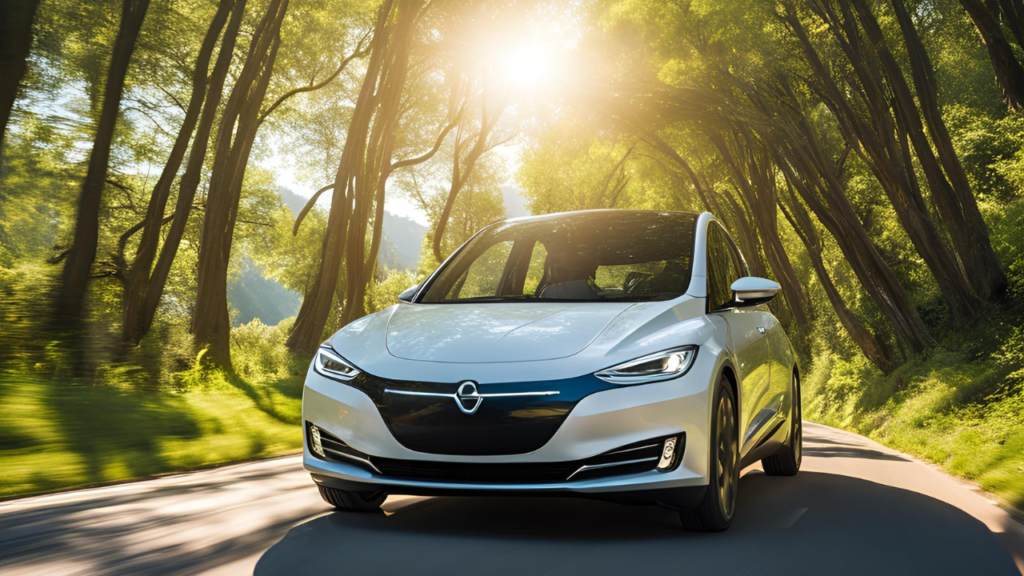Table of Contents
Get Familiar with Your EV’s Range
Electric vehicles often have a range of travel, on a charge due to their battery capacity limitations.. If you’re driving a car. Want to maximize your mileage, between charges…
- Check Your Car’s Range: Most electric cars have a driving range between 100 and 300 miles per charge. Make sure to understand your car’s capability.
- Plan Your Trips: If you’re taking a long trip, plan charging stops in advance. Apps like “Plug Share” or “Zap-Map” can help you find nearby charging stations.
Tip: Avoid letting the battery drop below 20%, as this helps maintain battery health.
Learn About Charging Options Electric Car
Charging your electric car is different from fueling up a gas car. Here’s a simple breakdown:
| Charging Level | Description | Best For |
|---|---|---|
| Level 1 (Slow) | Uses a standard home outlet, charging takes 8-20 hours | Overnight charging at home |
| Level 2 (Medium) | Uses a dedicated home charger or public station, charging takes 4-6 hours | Daily charging |
| Level 3 (Fast) | Rapid charging stations, charging takes 30-60 minutes | Long trips or quick top-ups |
Tip: Invest in a Level 2 home charger if you have a driveway or garage; it saves time and is convenient.
Understand Charging Costs of Electric Car

Electricity is usually cheaper than gas, but it’s important to know your charging costs:
- Charging at Home: Most electric car owners charge their vehicles at home, where electricity rates are lower, especially during off-peak hours.
- Charging in Public: Charging at public stations can be more expensive, especially at fast-charging points. Use charging apps to compare prices before plugging in.
Tip: Set your home charger to charge during off-peak hours (nighttime) to save on electricity costs.
Know How to Maintain Your Electric Car
Electric cars need less maintenance than gas-powered cars, but you still need to take care of them:
- Battery Health: Avoid rapid charging too often, as it can wear down the battery faster.
- Tire Care: EVs are heavier than regular cars, so check tire pressure regularly and rotate tires to prevent uneven wear.
- Braking System: Electric cars use regenerative braking, which means your brake pads last longer, but you still need regular inspections.
Tip: Schedule regular check-ups to keep your EV running smoothly.

Take Advantage of Regenerative Braking
Simply take your foot off the accelerator. Gently apply the brake to engage braking in certain situations .The electric motor functions, as both a power generator and a means to decelerate your vehicle by utilizing energy as the wheels turn the shaft within the motor.
Regenerative braking is a system that allows you to make use of the energy created when you brake by turning it into power to replenish your cars battery life efficiently This feature proves useful in situations, like urban traffic and downhill driving.
Electric vehicles come equipped with braking a function that captures energy during deceleration or braking maneuvers. Here are the steps to effectively utilize this feature;
- Drive Smoothly: accelerate gently and brake slowly to maximize energy recovery.
- Use One-Pedal Driving: Many EVs allow you to use just the accelerator pedal to speed up and slow down, which increases efficiency.
Tip: Practice driving with regenerative braking to get used to it and improve your car’s range.
Use Preconditioning for Comfort and Efficiency
Preconditioning is a feature that allows you to heat or cool your car before you start driving. Here’s how it helps:
- Saves Battery Power: Precondition your car while it’s plugged in, so it uses energy from the grid instead of the battery.
- Comfort: You’ll get into a car that’s already at the perfect temperature, even in extreme weather.
Tip: Set a timer to precondition your car before leaving for work or other trips.

Be Aware of Charging Station Etiquette
When using public charging stations, follow these simple rules:
- Don’t Hog the Charger: Move your car as soon as it’s charged to allow others to use the station.
- Avoid using fast chargers if you don’t need them: Save fast chargers for those who need a quick top-up on long trips.
Tip: Use apps to monitor your charging progress and move your car when it’s done.
Take Advantage of Incentives and Benefits
Many governments and local authorities offer incentives for electric car owners, such as:
- Tax Credits: Check if you qualify for federal or state tax credits for buying an electric car.
- Reduced Charging Costs: Some areas offer cheaper electricity rates for EV owners.
- Access to Carpool Lanes: In some regions, electric car drivers can use carpool lanes even when driving alone.
Tip: Research the benefits available in your area to maximize your savings.
Monitor Your Driving Habits
Electric cars are most efficient when driven smoothly. Here are some tips to improve your driving:
- Avoid Rapid Acceleration: Quick acceleration drains your battery faster.
- Use Eco Mode: Many EVs have an Eco Mode that helps you drive more efficiently and extends your range.
Tip: Drive at a steady speed, especially on highways, to get the most out of your battery.

Stay Updated with the Latest EV Technology
Electric vehicle technology is constantly evolving. Keep yourself informed about:
- New charging networks: More charging stations are being added every day.
- Software Updates: Some EV manufacturers offer software updates that improve your car’s performance and range.
Tip: Join online communities or forums to learn from other electric car owners and stay updated.
Frequently Asked Questions (FAQs)
1. How far can I drive on a single charge?
The driving range of an electric car depends on the model. Most electric cars can travel between 100 to 300 miles on a full charge. Always check your car’s manual or specifications to know your exact range.
2. How long does it take to charge an electric car?
Charging times vary based on the charging method:
- Level 1 (slow): 8-20 hours using a standard home outlet.
- Level 2 (medium): 4-6 hours using a home charger or public station.
- Level 3 (fast): 30-60 minutes at a rapid charging station.
3. Can I charge my electric car at home?
Yes, you can charge your electric car at home using a regular outlet (Level 1) or a faster, dedicated home charger (Level 2). Installing a Level 2 charger is recommended for quicker charging.
4. How much does it cost to charge an electric car?
Charging costs vary based on electricity rates in your area, but charging at home is usually cheaper than using public stations. On average, a full charge costs around $10-15, depending on your car’s battery size and local electricity rates.
5. Where can I find charging stations when I’m on the road?
You can find charging stations using apps like “Plug Share,” “Charge Point,” or “Zap-Map.” These apps show nearby stations, availability, and pricing.
Conclusion
Owning an electric car is an exciting step toward a cleaner and more efficient way of driving. By following these tips, you’ll be well-prepared to handle your new EV, enjoy the benefits, and make the most of your electric driving experience.
Transitioning to a vehicle could seem daunting initially; with the proper understanding and some practice, under your belt you’ll soon find yourself mastering the art of owning an EV effortlessly while enjoying the ride ahead!



Выбираем лучшие средства для химчистки дивана.
Химчистка диван [url=https://divan-clean-msk.ru]https://divan-clean-msk.ru[/url] .
Оптимальные цены на профессиональную уборку мебели и ковров в Москве.
Химчистка диванов кресел дому [url=himchistka-divan-kover.ru]himchistka-divan-kover.ru[/url] .
Как убрать пятна с мягкой мебели?
Сухая химчистка мягкой мебели – [url=https://www.mebel-dry-clean.ru]https://www.mebel-dry-clean.ru[/url] .
ytss9g